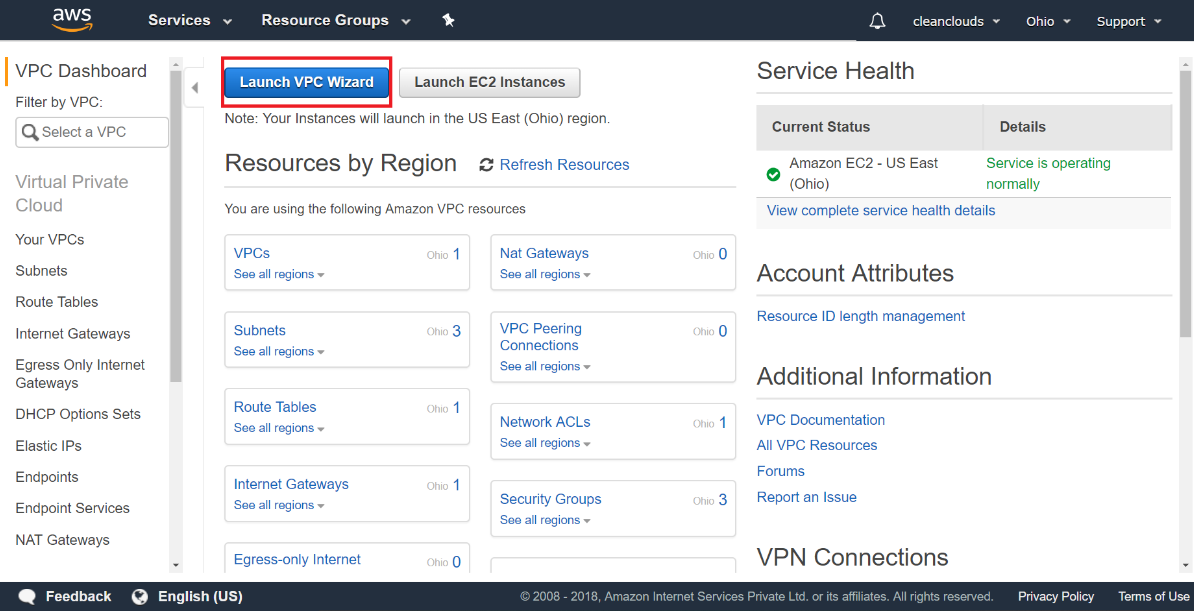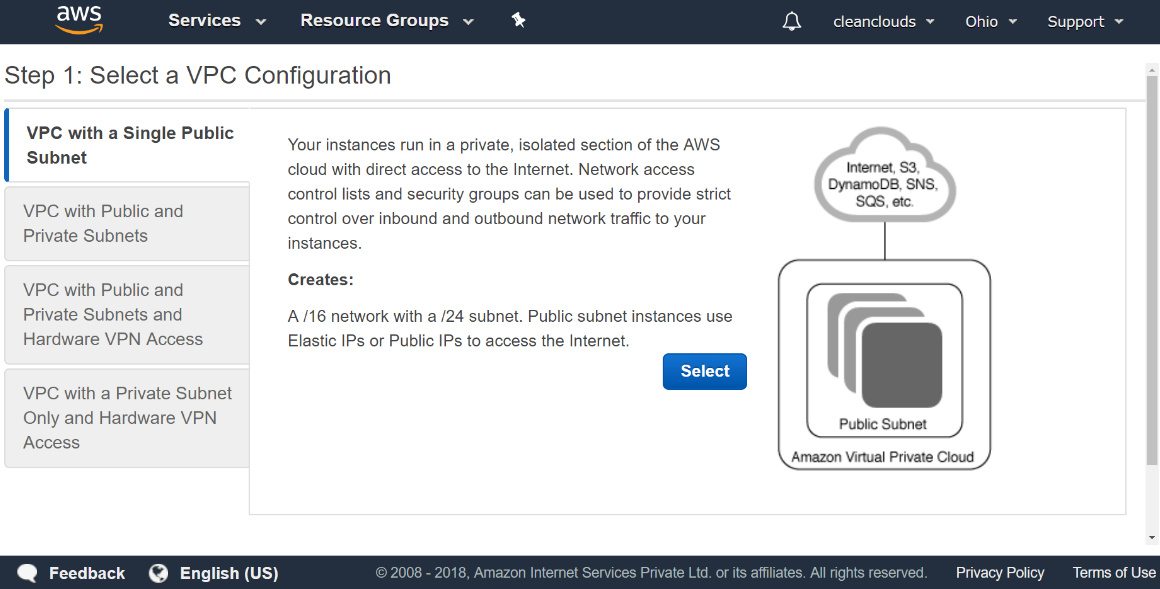In the previous section, we learned about the difference between classic EC2s and EC2s in a VPC. In this section, we will demonstrate two methods to create your own VPC. The first method will be using the VPC Wizard, which can give us a VPC with private subnets, and even an NAT instance.
We can create an Amazon VPC in two ways:
- A VPC the with Wizard:
- Single Public Subnet
- Public and Private Subnets
- Public and Private Subnets and Hardware VPN Access
- Private Subnet Only and Hardware VPN Access
- A custom VPC without using the Wizard
Creating a VPC using Wizard is the easiest way to create VPC.
Click on Services | Go to Networking & Content Delivery section | Click on VPC | Click on Start VPC Wizard on VPC Dashboard.
To create a new VPC, click on Launch VPC Wizard:

There are four possible options. The first one is a very basic VPC, with a single public subnet:

The second one, is a VPC with a public instance, containing an NAT instance or NAT gateway, and a...



